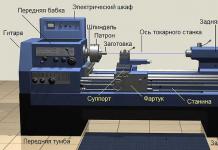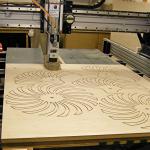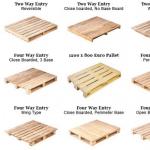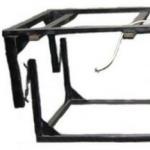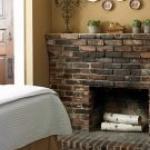Today on the Internet you can find a lot of communities and sites dedicated to creating magnificent flower samples, all kinds of figurines and simply original art objects from cold porcelain. Let's dwell on how to make flowers of interesting colors and shapes from cold porcelain on your own for a beginner, starting with the manufacture of porcelain itself for modeling and ending with finishing work.
Everyone knows that any hobby involves creativity and imagination. This is necessary both for the selection of colors and for the creation of original sculpting objects. But if you have just started to master this interesting hobby, then it is advisable to start with a master class on roses, with the simplest examples: petals, buds, stems, etc., where the whole process of creating a flower is shown step by step. When you learn all the basics, you will be able to mix colors with confidence, select the desired textures, and subsequently create your own original porcelain products. Moreover, everything made of porcelain can really look like a living, real thing!
We are engaged in the manufacture of flowers from cold porcelain with our own hands
First of all, you need to prepare all the necessary tools and materials:
- devices with different tips;
- dough wheel;
- cutting forms;
- wire of two types;
- floral tape;
- scissors.

In order for us to get a white rose as in the photo, which is so similar to a living one, you need to use a special form. On this form, the petals will be rolled out in such a way that the result obtained is in no way distinguishable from real rose petals.
We prepare homemade material (porcelain)
Although you can buy ready-to-use porcelain, we will make it with our own hands. After all, our modeling master class for beginners is based precisely on a home-made mixture of cold porcelain.
Porcelain is easy to make at home. You will need the following components:
- starch, maybe corn - 240 grams;
- PVA glue - 240 grams;
- oil for children "Johnsons baby" - 2 tablespoons or 50 grams;
- vinegar or lemon juice - 2 tablespoons or 50 grams each;
- oily hand cream - 2 tablespoons or 50 grams.

Porcelain preparation sequence
First, mix all the ingredients in a ceramic bowl. Then we put the resulting mass in a microwave oven at a temperature of 50-55 degrees. We pinpoint 30 seconds. After 30 seconds, our mixture should be well mixed with a spatula. This action is repeated 3 times.
The third time, the mixture should be so thick that it is difficult to knead.
In this form, transfer the resulting product to a cutting board, previously greased with a fat cream. Knead well until elastic.
So, we made cold porcelain ourselves. Now we can proceed directly to the modeling of the flowers themselves.
Note that all porcelain products do NOT require heating in the oven or drying in special conditions. They just need to be allowed to air dry!

Therefore, after preparing the mass, do not forget to wrap it tightly in a film and store it in the refrigerator. Otherwise, in the air, it will simply turn into a piece of porcelain. When we decide to sculpt something, we pinch off the required amount of material from the common piece, and wrap the rest tightly again and put it in the refrigerator.
You can cook cold porcelain in other ways, but this one is considered the simplest and most inexpensive to manufacture.
Simple MK: we make flowers
We got a white material. And for sculpting flowers, you need different colors. To give the necessary tone to the mass, you need to use dyes. By adding oil paints or blush or shadows to the mass, we will achieve the desired color. It is necessary to knead the mass well so that the tone is evenly distributed. You will get a material that resembles plasticine in consistency, which subsequently hardens. You can start a master class on flowers that are so easy to make from cold porcelain with your own hands.
Now our cold porcelain is ready, and without much difficulty we can sculpt the flowers themselves. For the bud, prepare pieces of wire, paper napkins and PVA glue in advance. Around the resulting bud, as in the photo, rose petals will be superimposed. Lubricate your hands generously with cream before you start sculpting.

Let's start making petals
From the main mass, pinch off the piece necessary for the petal and roll it in your palms. Knead it properly, and give the desired shape. Cut off the excess. Use a tool with a round tip to smooth out the edges of the petal so that they are much thinner than the middle. This must be done carefully! Petals are a very painstaking part of this master class, you need patience, and then everything will work out.
I propose to make the tool ourselves - a bead is put on the tip of the skewer. It will act as a stack. Lubricate the first small petal with glue and attach to our workpiece and press lightly. Wipe off any remaining glue. And so we close our bud with a few small petals so that it is not visible.
Then we proceed to the large blooming rose petals. Make them medium in size, then glue them so that each subsequent one slightly overlaps the previous one. Accordingly, the closer to the outer part of the rose, the more we roll out the cakes so that the petals become proportionately larger. Do not forget to smooth the edges with a bead.

You can use a relief shape for more realism. If there is none, make notches on the petals. After our flower is collected, it must be left to dry upside down. To do this, hang it on a wire stem over the edge of a convenient shelf (in our case, jars).
Leaves and stem
For the leaves you need a lot of mass of green. I suggest adding green oil paint to our mass, knead well so that the color is evenly distributed. Use molds to add natural texture and shape.
We wrap a piece of wire with floral tape, grease the tip with glue and press it into the finished leaf. Then we fix the leaf on the stem of the rose.

Then we wrap all the details that we fastened together with floral tape so that nothing superfluous can be seen.
Then the finished bouquet of flowers is left to dry. If you wish, varnish them.
Video on the topic of the article
Hooray, I am ready to show off my most complex and solid composition at the moment, “Dream!” in the technique of ceramic floristry. I won’t say that it was the most laborious, because last year’s competition was also molded for more than one week, but it’s nice to look at this handsome man (almost in shabby chic tones). And I'm not ashamed to show it.
How much time was spent? Well, at least a week and a half of modeling from morning to night (and sometimes until the next morning). Yes, I was distracted by tea with gingerbread, contact and even sometimes cooking something more serious than a sandwich.
My dear, invaluable husband bravely endured all this. And, of course, the most difficult thing was not the absence of a woman at home (whose place was taken by a staggering artist with carmine on his nose), but her endless whining. This is not so, this is not so, I'm mediocre, everything is terrible, oh, how beautiful it turns out, fu nightmare. Approximately in this way
On the penultimate night, my husband helped me roll the wire with teip tape. This is the most flawless part of the bouquet, believe me. Even if she is not visible.
Okay, I'm confused. Now I'll show you pictures. There will be many!
I want to immediately apologize for the quality of some of them. I had to shoot literally half an hour before the bouquet was handed over to the caring attendant, who delivered it to the customer. Therefore, I had to contrive in the lousy early morning light and the absence of a decent vase. Regular readers know that I always use the excuse that there is no vase. Friends, the other day I walked around a huge shopping center and did not find such a vase as I want. Chesslovo, I was looking for!



Separately, I would like to tell you how much to sculpt a lilac from polymer clay. In total, there are 281 flowers and 64 buds in the bouquet. This is a very small bunch, which I collected in about 10 branches - I diluted the rest of the flowers with them.
In terms of time, this is 939 minutes or almost 16 hours. To the unfortunate lilac!!! I took into account all the stages: twisting the loops on the stalk, creating a yellow center, the lilac flower itself, running in the sepals and stem. Assembly was not considered. And then, she took into account only pure time, without distraction for mixing paint, wiping hands, picking up scissors from the floor ...


In the bouquet, in addition to lilacs, there are ordinary roses, irises, white and pink peonies, white and pink brindle, rose and lily buds, foliage (the print was taken from living leaves, cold porcelain flawlessly removes the texture and even repeats dullness / shine).







All inspiration and more flowers!
If you want to be the first to know about fresh MK, subscribe to the site news Metally Flower - ceramic floristry for beginners.
Let shops and souvenir shops be filled with all sorts of cute trinkets, needlework does not lose its popularity. Moreover, there are more and more new ways to relieve stress and create something amazing. An example of this is cold porcelain flowers, which anyone can make. And it is not difficult to prepare material for creativity.
Thanks to social networks and interest groups, needlewomen from all over the world unite into friendly teams where they share recipes for interesting little things. This is how the idea of porcelain flowers gained popularity, not only looking great in the interior, but also captivating into the world of relaxation even at the stage of preparation.
 The simplest option for making artificial flowers is ready-made polymer clay. This plastic material is characterized by low cost and relative maneuverability. However, it is much more profitable and interesting to make porcelain with your own hands.
The simplest option for making artificial flowers is ready-made polymer clay. This plastic material is characterized by low cost and relative maneuverability. However, it is much more profitable and interesting to make porcelain with your own hands.
Before you start creating a masterpiece, it is advised to prepare all the necessary tools and accessories. The fact is that finished porcelain is very impatient. It freezes literally before our eyes, so after its preparation there will be no time left for preparing materials.
So, for work you will need:
- The usual wheel for the test;
- Forms for cutting (gingerbread will do);
- Wire, preferably two types;
- Scissors;
- Special tape for floristry.
If handicraft shops in the area promote porcelain creativity, they are sure to have special forms for flower petals. Such a device will allow you to create leaves with all their veins and bends. Such a product is indistinguishable from a real rose!
Self-preparation of material
In order not to buy ready-made material, you can make cold porcelain with your own hands. The cooking master class provides for the presence of the simplest tools at hand.
You will need:
- Starch. Suitable for both regular potato and corn;
- Lemon juice or a little vinegar;
- Skin oil "Johnsons Baby";
- Cosmetic hand cream;
- Tools with round tips.

Stationery glue and starch will need 240 grams each. The remaining components need 50 grams or about two tablespoons.
The ingredients for the preparation of porcelain must be mixed until smooth. After that, place the mixture in the microwave for half a minute. After 30 seconds of heating, remove the liquid from the oven and mix thoroughly. This procedure must be repeated three times.
 Subject to all the rules for the third time, the mixture becomes very thick. When it is difficult to mix, the mass is laid out on a cutting board. The surface is pre-lubricated with hand cream. The mixture must be kneaded in the same way as dough is kneaded.
Subject to all the rules for the third time, the mixture becomes very thick. When it is difficult to mix, the mass is laid out on a cutting board. The surface is pre-lubricated with hand cream. The mixture must be kneaded in the same way as dough is kneaded.
The advantage of such porcelain over purchased polymer clay is that products made from home-made material do not need to be dried in an oven or using other devices. Made crafts dry perfectly in the fresh air.
If there is a lot of mass, it is not necessary to use all of it. "Semi-finished product" is perfectly stored. Just wrap it in cling film and put it in the fridge.
By negligence, the mass forgotten on the table will quickly dry out and become unsuitable for work!
Making porcelain flowers
Thinking about what can be done from cold porcelain, it will be useful to know that the primary material is most often white. Therefore, white roses or other flowers that do not require the use of dyes are perfect for a “feather test”.
If it is necessary to give color to the product, you can mix the mass with a small amount of oil paint. More prosaic means will do. For example, cosmetic blush or eye shadow. Coloring agents should be added at the kneading stage, until the mass has hardened.
Before starting modeling, you should prepare a bud on which the petals will be superimposed. Before starting work, it is recommended to lubricate your hands with a greasy cream. While the bulk is in the refrigerator, several balls are rolled up and placed on the tip of the wire. After that, flowers can be made from cold porcelain.

Master class for beginners step by step:

You can dry the finished product in a room or in the fresh air, hanging it by an improvised stalk. The main thing is that the wire stem is quite long. It can be folded into a hook shape and hung on a clothesline. After drying, cut off the excess length of the wire.
Having blinded several such buds, they are combined into one composition, step by step creating truly amazing bouquets.

Do-it-yourself leaflets
To add greenery to the product, you need green dye. The mass can be painted with paints or you can buy ready-made plastic of the desired shade. In the store you can also buy molds for making vegetation. For those who are not looking for easy ways, you can cut the leaves by hand, enjoying the process.
Roll out the green mass should be very thin. It is optimal if its thickness does not exceed 1 mm. The surface is smeared with cream so that the thinnest layer can be removed from the board without damaging its shape.
Next, with a knife or with the help of a mold, the necessary contour is squeezed out. If it is difficult to manually draw a leaf, you can attach a paper pattern, previously cut out of wax paper, to the rolled out layer. Some craftswomen use artificial flower leaves that are pressed against the porcelain to create a characteristic relief.
Notches and grooves on the leaf are applied with any sharp object. A pin, needle or toothpick smeared with cream will do. The stem for the leaf should be wrapped with floral tape. Lubricate the tip with glue and press into the base of the sheet.
Finished flowers are left to dry. When the product dries, it can be varnished. However, real flowers do not shine, so artificial highlights can ruin the illusion of natural vegetation.
Kittens for home decor
From cold porcelain, you can create flowers, decorative elements and New Year's toys. Animal figurines are also popular, which will decorate and amuse lovers of homemade products.
Step-by-step instructions for sculpting a kitten:
- A ball is formed from a small piece of material. This will be the animal's head.
- Next, small flattened triangles are molded, which will become ears.
- A larger triangular piece is turned into a body, indicating the legs.
- A thin sausage will serve as a tail. It should not be too thin, so that this part does not fall off during drying.
- On the muzzle, holes for the eyes are pressed with the head of a pin and painted over with an ordinary marker. You can also add color to the eyes after the craft has dried.
- It's great if the cat's nose is pink. You can also paint it after drying.

How to store plastic products
You can make not only flowers from a polymer material prepared with your own hands. From cold porcelain, the master class for the preparation of which is quite simple, you can make other products.
Having tried your hand at cold porcelain modeling for beginners, you can proceed to more serious crafts. Experienced craftswomen create real miracles from this cold material.

It should be remembered that porcelain - the material is not only fragile, but also capricious. Store finished products in a dry place, as water can disrupt the structure of the craft. It is also important to protect products from direct sunlight.
Cold porcelain is an example of how real masterpieces can be created from improvised materials. The process will bring pleasure even to beginners and those who have never tried themselves as a sculptor.
Attention, only TODAY!
A floral composition of late autumn flowers will decorate your home, become an unusual gift for friends and once again remind you of the old but relevant truth - nature has no bad weather and an unloved season. And we are moving on to the simple master class "Delicate Bouquet". The peculiarity of this composition is that it does not require expensive molds and forms. We will do everything with a minimum set of tools.
materials
- Cold porcelain - self-hardening polymer clay
- Oil paints. In my case, it is yellow, red, green.
- floral tape
- latex glue
- Floral green wire #20 and #22.
Tools
- stack main
- Stack with balls
- Scissors
- Wire cutters
- brushes

Additionally
- Sisal
- Material for fixing flowers. It can be a floral oasis, a small piece of Styrofoam, or even a block of hardened polyurethane foam.
- Flowerpot, glass, cup or basket to set the composition.
- Floral material optional. Suitable artificial berries, dried flowers. You can do without improvised material, doing everything yourself.
Making a dahlia
We paint the clay with yellow paint.
On a piece of floral wire 25-30 cm long, we make a loop. We roll a ball with a diameter of about two centimeters from clay.
We put the ball on the wire loop, after lubricating it with glue. On the upper part we make cuts with scissors around the circumference of the ball. It turns out, approximately, as in the picture.
From yellow clay we form small sausages of such length that they can be equal in height to the ball. These will be unblown dahlia petals. We fasten them around the entire circumference of the ball, smearing the lower third of the strip with glue.
We leave the formed center to dry and proceed to the manufacture of the next row of petals.

Pinch off a piece the size of a pea, form a ball out of it, and then, using the main stack, roll out an oval from it. After that, we connect the lower edges of the oval as if we want to make a cone out of it.
In the photo there are several finished petals, and on the right is the blank from which we make such petals.
Having made about 10-12 pieces, we begin to fasten them around our middle.
For the curious: do not let the leaves dry and harden completely, otherwise it will be difficult to press them well to the middle.
Then we make another row of petals, and fasten them again. We try to glue new petals in a checkerboard pattern. If you keep it about the same size as the starting row, your dahlia will look in full bloom. If you start making each row a little more than the previous one, then the flower will look half-opened.
After a few rows, I make a few more elongated blanks, but do not connect their edges, leaving them oval. These will be the extreme petals, already fully opened. I do two more rows. Here the dahlia is ready and put to dry.

Carnations can be made in a variety of ways. We roll them with a rolling pin to a thickness of approximately 2-3 mm.
Then, with the tip of the main stack, I pass along the edges of each circle, tearing them.

On each circle we make cuts with scissors, not reaching the middle. Only 6 cuts, as if I'm going to cut the cake.

On a floristic wire 20-25 cm long, we make a loop and put on a drop of clay of any color. Here it is quite possible to use old clay from previous works, the middle of the carnation will not be visible. Lubricating the middle along the entire length with glue, pierce the smaller workpiece with the sharp end of the wire and put it on the wire.

Then we press the workpiece to the middle, smeared with glue. Petals around the middle form a wavy "skirt". I do the same with the second larger piece.

Now it remains to supply our carnations with sepals and petals.
We make green clay, roll it out 3 mm thick, cut out the usual semicircular petals. This can be done with a clay cutter and cut several blanks at once.

Lightly roll the petals in a stack to smooth the edges. With a stack with a ball, make a recess at the base of the sepals. Then glue to the back of the carnation.
From the same green clay, cut out elongated petal blanks with scissors. For each flower, two pieces, they are attached opposite each other.

Lubricate the bases of the leaves with glue and attach to the wire, not far from the flower head. Some leaves can be twisted onto the main stack and slightly “curled”.

When the flowers have dried, we tint the tips of the carnations with white, and the tips of the dahlia petals with a pinkish color to give expressiveness to the flowers.
The material for our composition is almost ready, it remains to make a few small additions.
Take wire No. 24, even No. 26 will do. One segment will be the main, the longest, about 30 centimeters. Attach four more small segments to it using floral tape, about 12 centimeters each. Make small loops at the ends of the wire branches.

Color the clay with a drop of white paint and make five balls out of it. These will be berries.

You can arrange them to your liking, for example, smear them with glue and dip them in fluffy powder or shiny glitter, small beads or tinted semolina.
Having made several such branches and one more, using a fleecy powder, we proceed to collect the composition.
We take a high cup, in it I fix a piece of floral foam, suitable in size. Top with green sisal. I fix a dahlia in the center, I insert carnations along the diameter. Between them are branches with berries.
Also add a branch of green leaves next to the dahlia.

These flowers aren't too difficult to make, and you can choose any color options you like, like purple dahlia and white carnations with purple tips.

In a word, create for your own pleasure, and may any season be happy for you.
Cold porcelain is the most accessible, inexpensive and very convenient material for modeling.
It is completely safe to work with it, and to create crafts you do not need special skills in sculpting, even a preschooler can sculpt from porcelain.
You can make cold porcelain with your own hands at home.
Do-it-yourself cold porcelain: a recipe for making
There are a great many recipes for making cold porcelain, and each master has his own secrets and components. They have one thing in common: this is PVA glue (white, construction), 1 part, 1 part of starch (it is recommended to take corn starch), 2 tablespoons of glycerin (sold in a pharmacy), 1 table. a spoonful of baby cream (or any other).
Glue is poured into a pan or saucepan, cream is added, the whole mass must be continuously mixed with quick movements, the saucepan is put on fire to heat, starch is gradually poured out, and stirring continues.
The mass thickens almost immediately, and will resemble unmixed dough, gradually a “snowball” is obtained in a saucepan, it must be put on a surface greased with cream and allowed to cool slightly. Then, the mass is kneaded until smooth. In this form, the mass can be stored for up to 2 days, but it is better to use it immediately.
Cold porcelain as a material: do-it-yourself crafts for beginners: a master class
Lilac flower making:
To begin with, a white flower is molded, and shades of color are applied later.
The mass dries pretty quickly, so you need to cover it with a piece of plastic wrap after each pinching.
1. Pinch off a piece of mass the size of peas.

2. With the help of fingers, the pea is shaped like a drop.

3. With small scissors, the drop is cut in width, several times so that petals are obtained. Then, gently straighten the resulting petals.

4. The flower comes out in about three approaches, the finished product is shaped with tweezers.
5. For the manufacture of the stem, a wire is taken, cut to the desired length, folded in half and twisted. The fold must be dipped in PVA glue, with a tip - pierce the flower in the middle, and pull the wire all the way. The product is installed in a vase until the glue dries. When the glue dries, the petals need to be closed.

6. We carry out a flower with petals of a different shape. A droplet is also molded, but now not its wide part is cut, but a narrow one. We continue to act step by step, as with the first flower.

7. Another version of the flower is a lilac bud. To do this, the pea must immediately be strung on a wire with glue. Directly on the wire with your fingers, the bead is shaped like a drop. Scissors slightly cut the very top. Everything, the bud is ready!
8. We do this several times until a sufficient number of buds and flowers are created.

9. To get a colored flower, you need to tint the mass during the kneading process. To do this, a piece of the mass is plucked off, a little lilac acrylic paint is dripped inside. It is important not to overfill, otherwise the mass will not mix well. Now you need to knead until smooth.
10. After making a sufficient number of flowers, you need to send them to dry in a place where there are no drafts. Approximately, this will take a day. After drying, the flowers decrease in volume by twenty percent.
11. Now you can collect inflorescences, for this the wire is twisted. Inside the flower, the center is stained with a drop of paint.
12. Leaflets are cut with scissors from a pre-rolled green mass. The veins are made in a stack (sticks for modeling).
13. A bouquet is being assembled. All is ready! You can admire!

Making sakura flowers
1. Sakura is no less interesting to sculpt. For this, two “sausages” are rolled from the mass: unpainted and tinted with pink. White sausage should be twice as big as pink sausage. Now they need to be folded together and shaped into a block. Then, it is cut into cubes.

2. A petal is molded from the cube.
3. Petals are collected in a flower, they need to be fastened with a small amount of PVA. The collected petals are pierced with wire under the stem.

4. Buds are made similarly to lilac buds. Do not forget about a drop of glue on the wire.
5. Sakura sepals consist of five petals, they can be tinted with cosmetic shadows. We repeat the operations - wire, glue, a bud and a sepal are going.
6. A branch of sakura is collected in the same way as a lilac branch. It is necessary to take into account its natural appearance (you can first look at the photos of sakura on the Internet). A brown mass is applied to the twig in a small layer, imitating the bark of the twig. Fingers need to give characteristic cracks and protrusions.

DIY cold porcelain rose
To make a rose, you will need everything in the photo:
1. A small ball is rolled out.
2. A drop is formed from it.
3. The tip of the toothpick is dipped in PVA and the resulting drop is strung on it with a wide base down. This is the base of the flower. For fixation and stability, you need to stick the end of the toothpick into the foam or sponge.
4. It is better to prepare the pistil of the flower in advance so that they have time to dry.
5. We form the ball again. With a finger, the ball is shaped like a drop.
6. On the palm of our hand, we spit our droplet, forming a rose petal. Make sure that the edges are not thick.
7. A drop of PVA is applied to the base of the rose for adhesion and the first petal is applied, it should slightly “hug” the middle.
8. Repeat steps 5-7, forming the desired number of petals. Starting from the second petal, each subsequent petal must overlap the previous one.
9. We look at a photo of a rose flower and adapt to a real flower (we perform tucks and bends in the right places)
From these flowers, you can later make a decorative topiary - a beautiful tree on a long stem. Branches of lilac and sakura can decorate the house, or give to someone.
From cold porcelain, you can make not only flowers, but also various figurines, key rings, panels, decorate flower pots with stucco molding, make interesting bas-reliefs and many more different crafts.

